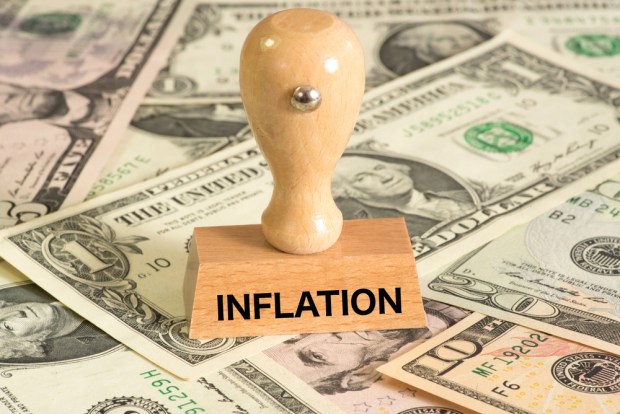Inflation Creeps … Right Into The Shopping Basket?

A few months back, Morgan Stanley published a report stating that inflation – which had been dormant for years in the wake of the financial crisis – was stirring.
Core inflation, which excludes food and energy prices, for the G3 economies, including the Eurozone, Japan and the United States, should move higher, said the report. The overarching trends spurring prices to go higher have included macro developments such as low unemployment and wage growth, as employers joust for the same (relatively smaller) pool of available workers.
Now inflation is making its way, perhaps, more directly into the shopping basket.
The Wall Street Journal reported that a number of marquee names in household staples have been boosting prices on everything from toilet paper to diapers. The price hikes follow some previous boosts in 2018, indicating that companies such as Church & Dwight, which makes household products including Arm & Hammer baking soda and OxiClean cleaners, see the retail environment as supportive of such increases.
Items seeing price increases span a third of the company’s offerings, such as Arm & Hammer cat litter, and a number of household cleaning products. Discussions are also in the works to raise prices on personal care items. The company joins peers such as Procter & Gamble and Clorox, among others, that have been or will be passing along higher costs of input materials and transport. Because, of course, inflation creep hits companies, too.
In one example, over the past several months, Procter & Gamble has begun boosting prices across a number of products by between four to 10 percent.
As a result of consumer packaged goods companies passing along the impact of inflation, The WSJ reported that even Amazon has been ratcheting up prices at Whole Foods, in an effort to cover the increases by those suppliers. As a result, items as far-flung as soap and nut butters may cost consumers anywhere from 10 cents to several dollars more. The Whole Foods hike comes after Amazon had cut prices upon acquiring the company in 2017.
The shift away from what we might call a “price cut mindset” comes even as these companies (and retailers in general, of course) have to grapple with the Amazon effect, where price matters, and so does speedy delivery.
The impact of inflation can be seen in Nielsen data analyzed by Sanford C. Bernstein. The data shows that sales volumes of such household items slipped by 1.4 percent in January of this year, but dollar sales were up 70 basis points.
Firms have other tactics at hand to get more money out of the products they sell. There is also the practice known as “shrinkflation,” where items get smaller, but prices stay the same. In essence, this is a price increase. Smaller toilet paper rolls and candy bars and bags of sugar mean consumers get less for their money, and likely have to make more trips to the store.
Many of these consumer goods firms operate on a global basis. Perhaps it should come as no surprise, then, that just last month in the U.K., the Office for National Statistics said that roughly 200 items examined had been “shrunk” in size within the measured period between 2015 and 2017, but still sported the same price tag.
The price increases come as wage increases have been in the low single digits, and in some cases may be outpacing wage growth. In addition, interest rates are on the rise. It may be true that they are coming off of historic lows, but then again, rates charged on credit card debt have topped more than 17 percent in recent months, up more than 200 basis points from just a few years ago.
Bankrate has estimated that 74 million American have more credit card debt than savings – at about 29 percent of the population, that’s the highest level measured by the company in eight years. As has been widely reported, there is over $1 trillion in credit card debt outstanding, and the average household carries a bit under $7,000 in credit card debt. True, that balance may be enough to manage for now, but then again, some warning signs are brewing.
In the latest Financial Invisibles report from PYMNTS, only a bit more than 67 percent of consumers said they were able to pay all of their bills on time as measured in the third quarter of last year. And as many as 61 percent of respondents to our survey used credit cards to pay outstanding debts, up from 44.6 percent earlier in the year – indicating that available credit is narrowing and balances are ballooning.
That implies that before too long, there may not be enough wiggle room to absorb the hikes at the register that suddenly are levied on cat food or diapers.
